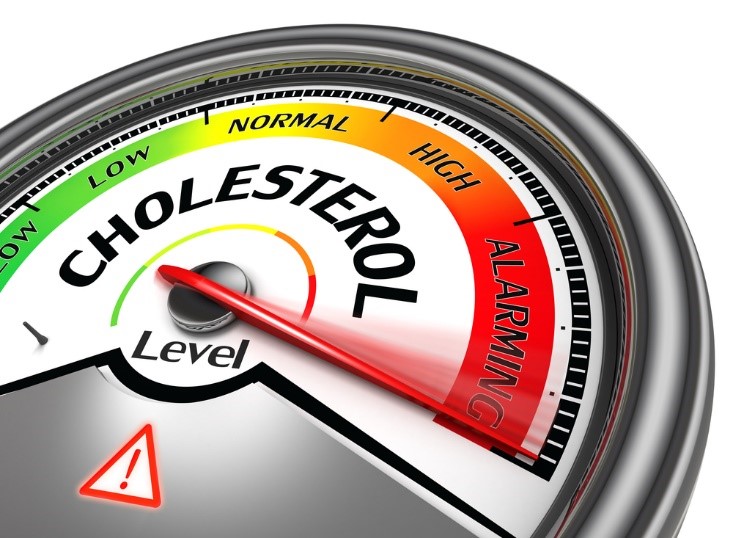Interesting Facts About Low-Density Lipoproteins
Low-Density Lipoprotein (LDL)
Low-density lipoprotein transports the fat molecules in our the body in the extracellular water and is one of the major group of lipoproteins. The proteins, at least in size & density, in relation to surrounding water, to highest in size and density, are known as chylomicrons (aka ULDL by the overall particle size/density naming technique), High-Density Lipoprotein (HDL), Intermediate-Density lipoprotein (IDL), Low-density lipoprotein (LDL), Very Low-Density Lipoprotein (VLDL), and transports fat molecules to the blood cells which can cause the progression of atherosclerosis if these molecules become oxidized inside the walls of our arteries.
Lipoproteins transport lipids, i.e., fats, across our body through the extracellular fluid thereby increasing the fats to be available and enhance the body of the cell-wide via receptor-mediated endocytosis. Lipoproteins are complex molecules comprising of multiple proteins, generally 80 to100 proteins/particle (incorporated by a single apolipoprotein B for LDL and the larger molecules). One LDL molecule is around 220-275 angstroms in diameter and can transport around 3,000 to 6,000 fat particle, varying in size on the basis of the quantity and mix of fat particles consisting within. These lipids contain the fat molecules with phospholipids cholesterol, phospholipids and triglycerides dominant; quantity of each differs considerably.
Interesting Facts about LDL:
- LDL is the transporting tool for cholesterol in our cells (consider them as miniature dumping vehicle moving the cholesterol) and other fats (triglycerides) to the cells in a human body.
- Newborn babies consist of Low-density lipoprotein level between 25 to 40 mg/dL, as compared to an average adult’s level, which is somewhere between 130 – 160 mg/dL.
- Researches show that the LDL levels may not increase with age.
- The size of Low-density lipoprotein molecules might be more important than the level of concentration in the blood cell.
- Small and dense Low-density lipoprotein cholesterol particles increase the chances of heart disease by nearly six times. Small particles LDL cholesterol are found in patients who suffer type 2 diabetes or are pre-diabetic.
- LDL particles might attach to free radicals and become oxidized. Once oxidized, these particles can really damage the inside of the walls of our artery-cells, penetrate it, and stimulate the accumulation of bad cholesterol there.
- Oolong tea (available in most Chinese/Asian restaurants) has been known to enhance the size of LDL particles.
- Oxidized Low-density lipoprotein may act as an inflammatory material, which can initiate an attack of particular cells known as macrophages.
The American Heart Association (AHA), National Institute of Health (NIH), and National Cholesterol Education Program (NCEP) has given a set of guiding standards for Low-density lipoprotein-Cholesterol levels, expected or calculated, and risk of a heart disease. These guidelines were as mentioned below:
| mg/dL Level | mmol/L Level | Diagnosis |
| 25 to 49 | Less than 1.3 | Healthy level of LDL cholesterol, found in fit young children prior to the inception of atherosclerotic plaque in the walls of heart artery |
| 50 to 69 | Less than 1.8 | Optimal level of LDL, proportionate to the lower rate of progression, preferred as a target range for people known to evidently have signs of symptomatic cardiovascular disease |
| 70 to 100 | Less than 2.6 | Optimal LDL cholesterol, considered closer to lower, but not zero, levels for symptomatic cardiovascular disease occurrence |
| 101 – 129 | 2.6 – 3.3 | Borderline normal LDL cholesterol level, represents near higher level for developing symptomatic cardiovascular disease cases |
| 130 – 159 | 3.3 – 4.1 | Marginal risky LDL-C, represents a relatively higher level for growing symptomatic cardiovascular diseases |
| 160 – 199 | 4.1 – 4.9 | Risky LDL-C level, closer to much higher level for developing symptomatic cardiovascular diseases |
| 200 or above | Greater than 4.9 | Highly Risky LDL cholesterol, represents the highest growth rates of symptomatic cardiovascular disease incidents |
Low-Density Lipoprotein Testing
Blood tests generally report LDL Cholesterol, the level of cholesterol which is considered to be present in the LDL particles, on an average, uses a formula, called Friedewald equation. In clinical reference, it is a mathematically generated estimation of LDL-Cholesterol levels andisgenerally used as an estimating guideline of how much the LDL are driving the growth of atherosclerosis. The drawback of this method is that Low-density lipoprotein-Cholesterol values can be discordant with both direct assessment of LDL-particles and existing rates of atherosclerosis growth.
At Dr Lal PathLabs, we offer the best LDL-C testing solutions, which estimates the level and progression rate of cholesterol in the lipoproteins precisely.













